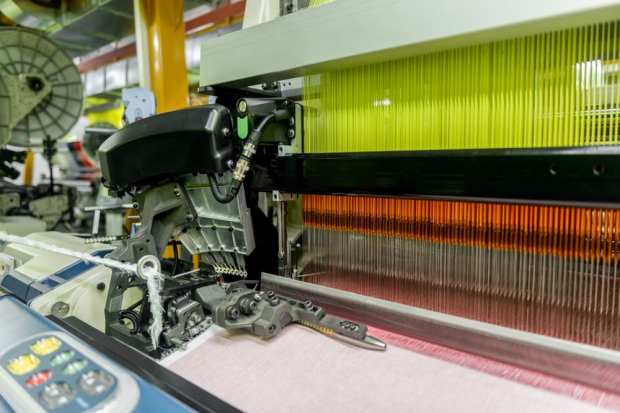Redesigning The Apparel Supply Chain With Production Innovation

Generally speaking, fashion companies do not own the manufacturing process that produces the items sell, which can be a big limiter of innovation. Fashion brands can dictate the look of the items – their shape, color and overall aesthetic design. But the actual materials used to make those products is not always, or even often, within their control. Instead, PANGAIA Chief Innovation Officer Amanda Parkes explained, most brands must work with the materials that textile mills and manufacturers choose to develop.
And that is a best-case scenario, she noted – the alternate often involves taking whatever textiles have been produced for the military or other industrial development projects and finding a way to work with it.
But the siloing of these two parts of the fashion industry didn’t work for PANGAIA, a fashion startup that doesn’t just aim to design the clothes, but also to improve the backend world of textile materials. That means conducting material science in its R&D Lab in Florence, Italy – and then displaying those textiles via its private-label clothing brand.
That private-label clothing brand is the firm’s revenue engine – for now, anyway. But the longer-term business model looks to B2B textile sales, materials licensing and brand partnership for further textile development. According to Parkes, until recently, a high-capital, long-term-oriented business like PANGAIA would have had trouble finding funding, particularly after a few high-profile startup flameouts in the last year or so – but now, an “investment structure is opening up.”
“There are different value systems [beyond simply ROI], including impact, philanthropy and recognizing where resources need to go,” she noted.
Delivering on those values means providing a truly different fashion product, from material to final design. To that end, said Parkes, PANGAIA offers some out-of-the-box-sounding options. Their biggest seller, for example, is a T-shirt made of cotton and seaweed that is treated with an antibacterial peppermint solution so that it needs to be washed less often.
The company’s latest flagship product, called FLWRDWN, is designed as an alternative to both the animal and synthetic down available on the market today. Goosedown is full of bacteria and highly flammable, not to mention chock-full of suffering for the goose whose feathers went into the comforter or puffy coat. Synthetic down solves for those issues, but is generally made of a petroleum-based alternative that is heavily polluting. FLWRDWN, the firm claims, is the culmination of a decade-long development project that combines natural wildflowers and biopolymers to create a warm, stylish, down-stuffed fashion item that also happens to be fully biodegradable.
Does FLWRDWN live up to its billing? That question remains to be answered, as the product is very new to the market and not many formal assessments have been done.
But whatever the ultimate ruling on its newest product, PANGAIA’s base idea is interesting. Fashion brands tend to view themselves as competitors, and when it comes to selling fashion items, they are. But when it comes to gaining access to better, more innovative materials, they have every reason to collaborate, Parkes noted – because a better, more sensitive supply chain is the rising tide that can lift all of their boats.
